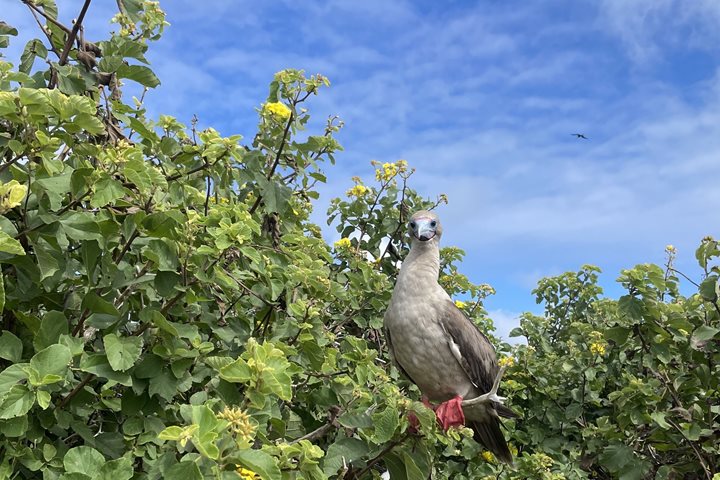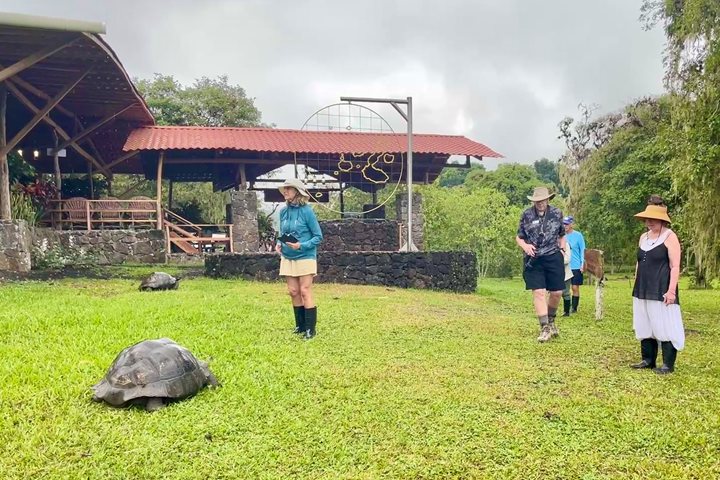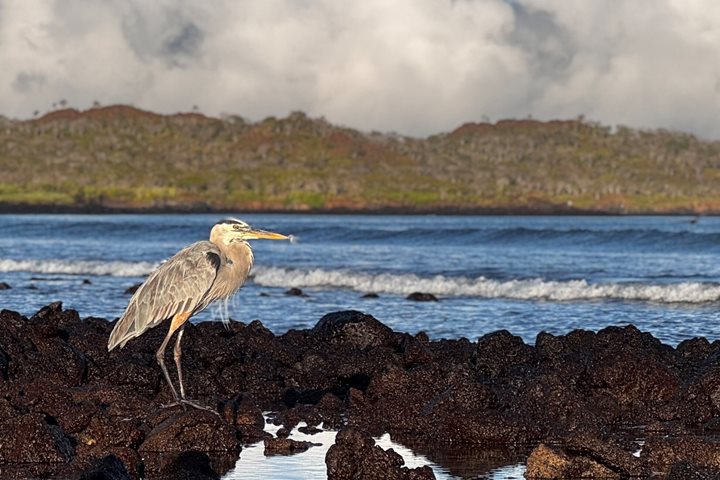There is no better way to enjoy the first full day of our expedition than by visiting one of the most stunning islands of the Galápagos: Española. Located in the southeast, it endures the force of both the South Equatorial Current and the trade winds, particularly at this time of the year. Española is one of the oldest islands and thus has a high rate of endemic species. There are just two visitor sites on the island, Gardner Bay and Punta Suárez, which means most of its area is off-limits to humans, remaining totally protected.
5/29/2025
Read
National Geographic Gemini
Genovesa Island
Genovesa is considered one of the Galapagos crown jewels, and today it was showing off all of its splendor. Immediately after breakfast we put on our sturdy shoes and set out to explore Prince Philip’s Steps. This area is known for opportunities to observe not only large colonies of nesting Nazca and red-footed boobies, but maybe, just maybe, the short-eared owl which exhibits diurnal behavior on this island. After this walk we got ready for a dip in the Pacific Ocean and snorkeling along the inner coast of this caldera. The afternoon was equally amazing as we disembarked to explore Darwin Bay, along a short and easy trail that was packed with wildlife. Here we observed not only nesting frigatebirds, red-footed boobies, and Nazca boobies, but also a few yellow-crowned night herons. It was another incredible afternoon in the Galapagos Islands.







